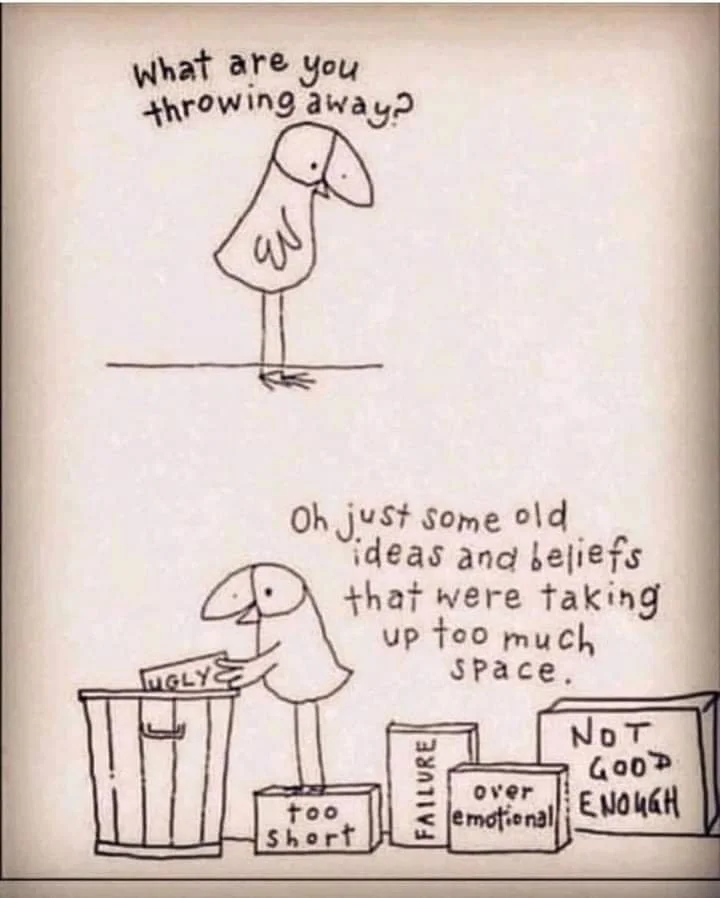3 vital questions to ask yourself when the going gets tough (experiencing dissonance)
Many years ago, whilst out for dinner on the east coast of Malaysia, my husband, Markus, and I got caught out in the rain. We were on a road trip with our motorbike and the weather turned quite quickly. It is remarkable how quickly the weather can change in the tropics. It was beautiful weather as we left for dinner. But unfortunately, during dinner, the weather changed. The winds picked up, and we knew that rain was fast approaching. We did not have our rain gear with us as we were less than 10 kilometres away from our hotel and did not think we would need it that night.
We had finished dinner whilst it was still windy, and I thought we would make it to the hotel before the rain started. Markus wasn’t sure if we would make it in time. He hesitated (he had experienced tropical rain before). To which my reply was, ‘let’s go, how cold can it get in the tropics?’ And so, we made our way.
As if to teach me a lesson, the heavens opened, and we got wet. The rain was so heavy and the winds strong that Markus could barely see through his helmet that he decided to pull up at a small roadside shelter to let the rain slow down or stop. Never have I been so cold. Standing there, waiting under the shelter was the coldest I have felt in the tropics.
Malaysia’s temperature all year round varies, on average, between 25 -33 degrees Celsius. Our humidity, however, hovers between 70 – 90% on an average day. Which makes the ambient temperature feel higher. On the flip side, when it rains, the temperature drops by a few degrees in a short time. This, plus the wind which is induced by the low atmospheric pressure during rainfall, adds a ‘windchill’ factor. Theoretically, I knew this, but I had never experienced it. All I had were my assumptions to steer my thinking. And my assumptions, which led to a belief, let me down.
This reminds me of a brilliant McKinsey article on identity mind traps. Though the article talks more about the ‘identity mind traps’, the three questions at the end of the article, I believe, are evergreen and usable in any context that involves dissonance. I use them now when making decisions of significance. I believe they enable better decision making and, can catalyse your future-self journey. I hope you find them useful too.
The three vital questions are:
1. Why do I believe what I believe?
The article suggests getting to the source of the belief rather than looking for evidence that supports a belief. In my example above, I have no idea where my assumption came from. I have hiked and camped in the rain in Malaysia. It is a damp and not very fun affair, but I was never that cold. So, perhaps it is this imprint in my brain that made me jump to my conclusion? The article talks about examining our belief system to help us shift our attachment to our beliefs. For me, it was my belief system that the tropics cannot get cold. That has now changed!
2. How could I be wrong?
This question is so poignant. The intention of the question is not to future-proof your beliefs but to allow other ways of seeing them in your context. In my example, I learnt very quickly of my folly. I remember telling Markus, ‘gosh, it’s cold’, wondering how I could have been wrong. It was discomforting, mentally and physically. The authors also state that feeling discomfort in the process of answering this question, for your context, shows that you are on the right track. ‘This creates psychological flexibility and opens up new possibilities. When used in the right way, this question is a high-energy packet of development goodness’.
3. Who do I want to be next?
We often think of the future in terms of what we want to do, our next steps, to-dos and rungs on the ladder that we want to climb. But rarely do we think in terms of who we want to be next. My default setting, when doing new things, was skewed towards ‘act first, think later.’ My future self is certainly more ‘think first, act later.’ It is a work in progress, but I am learning to incorporate pausing on demand when making decisions. The authors state that your future self becomes a guiding beacon to help you traverse your future and development path with grace.
I was sent the image below by my cousin but unfortunately, the source is unknown. The three questions can help us clear old, irrelevant beliefs too.
As always, you can reach me at yoga@yoganesadurai.com
